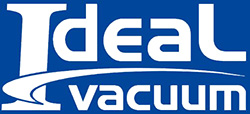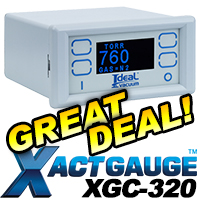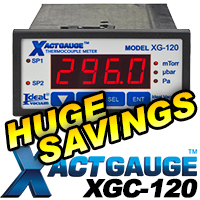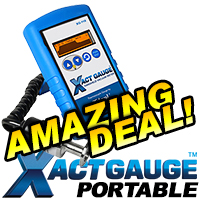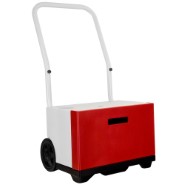Pfeiffer AdixenTransport Cart, 2 wheels, for ASM 340 Helium Leak Detector. (CART ONLY)
Pfeiffer Adixen Part Number 122570
2 wheel plastic cart for ASM 340 Helium Leak Detector. Convenient drawer to store leak detector accessories (sniffer remote control...etc.) This is the CART ONLY. Specs on ASM 340 Helium Leak Detector Below. PDF Operating Instructions for Cart Below.
FEATURES for the Pfeiffer Adixen ASM 340 Dry Helium Leak Detector Mobile:
- Contains primary turbo pump and internal 2.5 CFM diaphragm backing roughing pump
- Automatic calibration
- Fast time to test: unrivalled performances from small to large volumes
- Narrow design and highly maneuverable
- Customizable operator interface with 360° viewing
- Integrated SD card for data processing
Optional ACCESSORIES for The Pfeiffer Adixen ASM 340 Dry Helium Leak Detector:
- Pfeiffer Adixen Standard Helium Spray Gun, 112535
- Helium Spray Gun "Elite Kit" with accessories in compact case, PN: 109951
- Standard Sniffer Probe, 5 meters with 9 cm nozzle, PN: SNC1E1T1
- Standard Remote control, leak rate in mbar l/s, legend in English, PN: 106688
- Standard Remote control, leak rate in Pa M3/s, legend in English, PN: 108880
- Pfeiffer Adixen Std Helium Sniffer Probe, SNC1E1T1
- Pfeiffer Adixen Wired Remote Control, in Torr l/s, 108881
- Pfeiffer Adixen RC 500 WL Wireless Remote Control, PT 445 432-T
Helium Leak Testing Basics
Helium mass spectrometry, or helium leak testing, is a highly precise means of leak detection. This technology was first developed for the Manhattan Project during World War II to locate extremely small leaks in the gas diffusion process.
At the heart of helium leak testing is a complex piece of equipment called a helium mass spectrometer. Quite simply, this machine is used to analyze air samples (which are introduced into the machine via vacuum pumps) and provides a quantitative measurement of the amount of helium present in the sample. In practice, a "leak," is identified by a rise in the level of helium being analyzed by the machine.
Helium leak testing can identify extremely small leaks. For example, our equipment can detect a leak so small that it would emit just two cubic centimeters of helium (or the amount equal to two sugar cubes) in 320 years. While very few applications require this level of precision, this example serves to highlight the accuracy possible with this process.
While helium leak detection may appear to be a simple procedure, the process involves a combination of both art and science. The user must ensure the equipment is functioning properly and the process is highly dependant upon the user’s experience. Consider this analogy: while anyone with enough money can buy an airplane, learning how to fly one takes a lot of practice. The same is true with helium leak detection—make sure your "pilot" knows how to fly.
Why Is Helium Superior?
While many gases are used in leak detection, helium’s qualities provide for superior testing. Having an AMU (Atomic Mass Unit) of only 4, helium is the lightest inert gas. Only hydrogen, with an AMU of 2, is lighter than helium. However, due the hydrogen’s explosive potential it is rarely used.
Additional reasons why helium is a superior tracer gas:
- Only modestly present in the atmosphere (roughly 5 parts per million)
- Flows through cracks 2.7x faster than air
- Nontoxic
- Nondestructive
- Nonexplosive
- Inexpensive
- User Friendly
Due to these attributes, and its high sensitivity, helium leak testing has gained broad acceptance in a wide range of leak testing applications. Helium Leak Testing’s two primary testing modes while there are a variety of testing procedures, in general there are
Two primary methods of helium leak testing:
- Spray Probe
- Sniffer Probe
The choice between these two modes is based on both the size of the system being tested, as well as, the level of sensitivity required.
Spray Probe: Provides Maximum Sensitivity
For this technique, the leak detector is hooked directly to the system under test and the inside of the system is evacuated. Once an acceptable vacuum is achieved, helium is sprayed discreetly on the outside of the system, with particular attention being paid to any suspect locations. Any leaks in the system, including defective welds (caused by cracks, pin holes, incomplete welds, porosity, etc.), flawed or missing gaskets, leaks due to loose clamps, or any other defect will allow helium to pass and be readily detected by the machine. The source of any leaks can then be accurately pinpointed and repaired.
The spray probe process is used to achieve the highest level of sensitivity. The equipment being used dictates the maximum sensitivity achievable; in Jurva Leak Testing’s case it is 2x10-10 std cc/sec. This technique does require that the system being tested is relatively leak tight prior to testing, as an ample vacuum is required for testing. However, by using special throttling devices a gross test can typically be performed. The gross test should eliminate any major leaks, permitting the use of increased sensitivity.
The following are examples of systems that we test using the spray probe technique:
- A-bar furnaces
- E-beam systems
- Laser systems
- Metal deposition equipment
- Distillation systems
- Vacuum systems
Sniffer Probe
For this technique, helium is purged throughout the inside of system being tested. Due to the innate properties of helium it readily migrates throughout the system and in its attempt to escape penetrates any imperfections, including: defective welds (caused by cracks, pin holes, incomplete welds, porosity, etc.), flawed or missing gaskets, leaks due to loose clamps, or any other defect. The system’s exterior is then scanned by using a probe attached to the leak tester. Any leaks will result in an increased level of helium nearest the source and be readily detected. Leak sources can then be pinpointed, providing the opportunity for immediate repair and retest.
Unlike the spray probe technique, this process is very flexible and can be adapted to meet the needs of any virtually any system in which helium can be injected. There is no practical size limitation. The sniffer probe technique is not as sensitive as the spray probe process, however, due to the amount of helium present in the air (approximately 5 ppm). The maximum sensitivity achievable under this procedure is approximately 1x10-6 std cc/sec. Nevertheless, this process is vastly superior to other traditional leak testing methods, such as: bubble testing, acoustic emission, liquid penetrant or vacuum box testing.
The following list is an example of systems that Jurva Leak Testing has tested using the sniffer probe process:
- Storage tanks (both above ground and below)
- Floating roofs
- Underground pipelines
- Underground cables
- Aseptic systems (flash coolers, heat exchangers, fillers, etc.)
- Any vessel/line or system that can be pressurized
